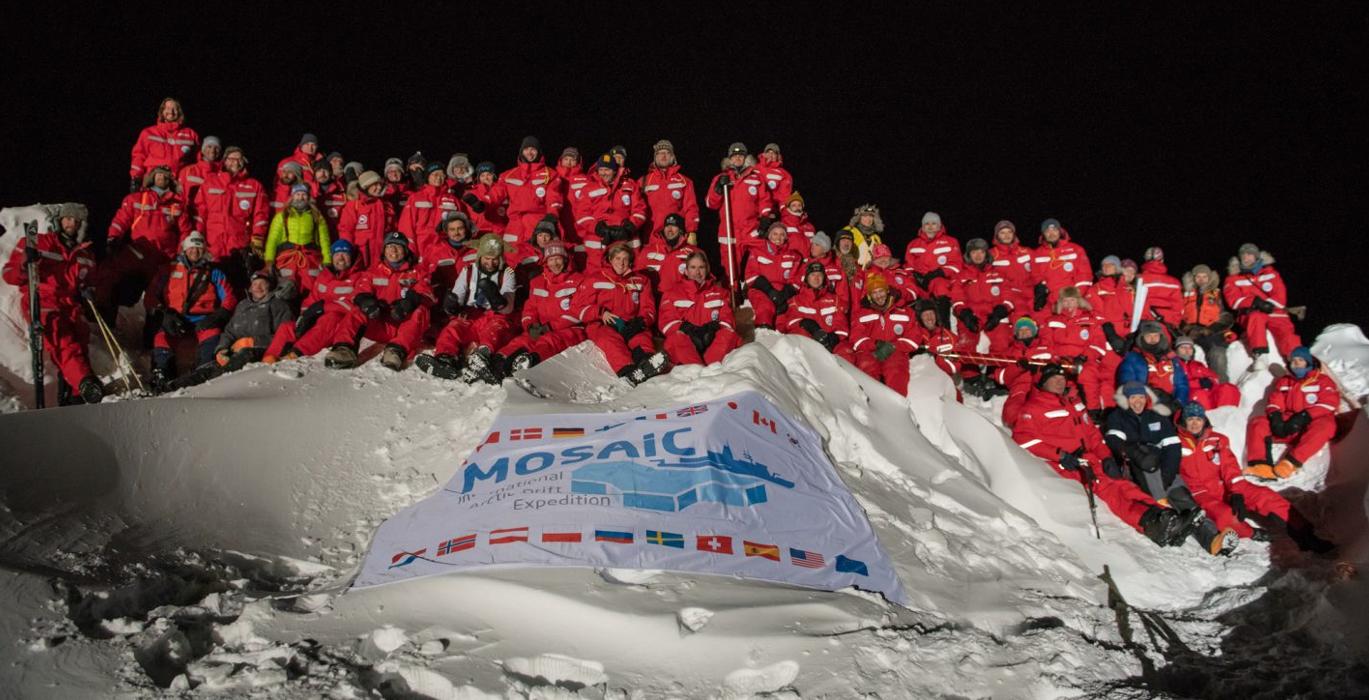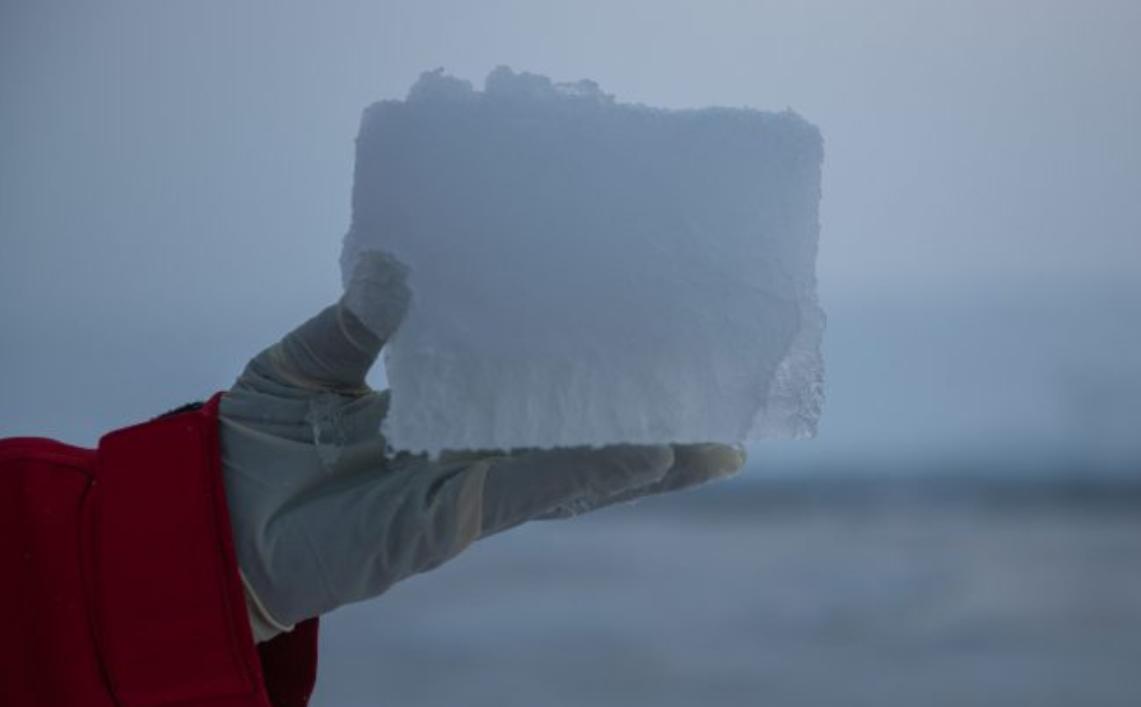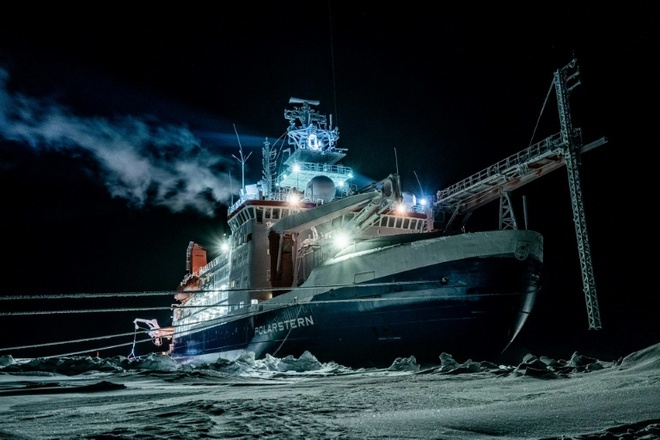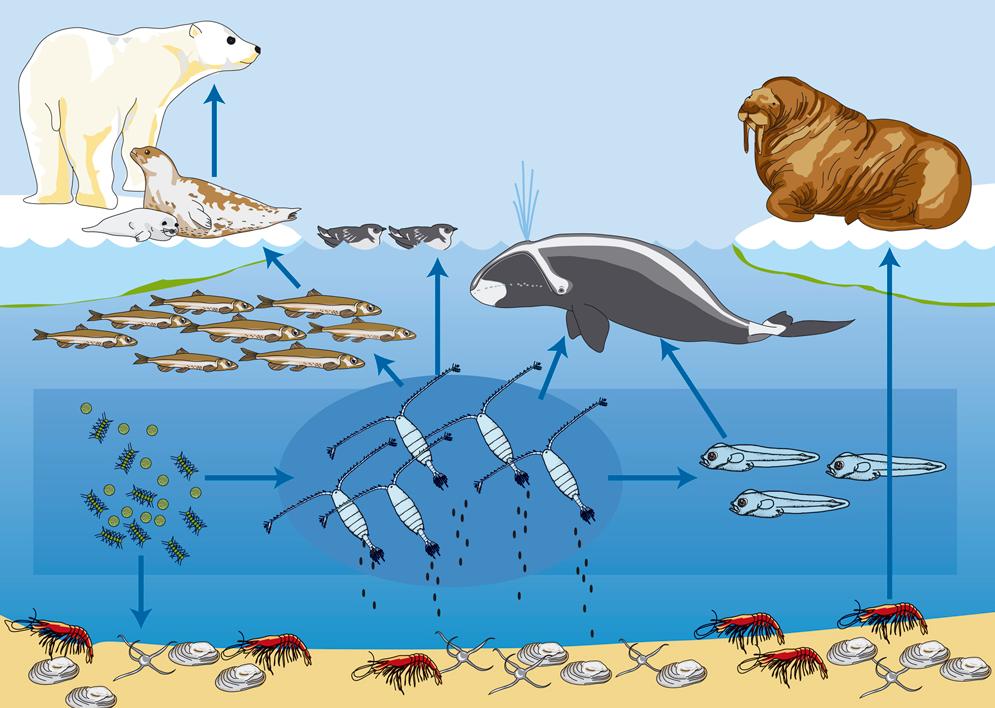After 389 days in the Arctic, costing more than $160 million, hundreds of scientists bring back bad news: What is it?
- Tram Ho
On October 12, 2020, scientists participating in the world’s largest mission to explore the Arctic returned from a journey of 389 days. Accordingly, an expert team of 300 scientists from 20 countries around the world has witnessed first-hand the effects of global warming on Arctic ice.
The goal of this $165 million expedition is to understand climate integration in the Arctic region, so that more accurate models can be added to global climate models. Findings about the atmosphere, sea ice, ecosystems, etc. can help experts improve weather forecasts and better assess the impact of climate change on climate change. with the region and the world.

MOSAiC is considered the largest Arctic mission in the history of the world. Photo: MOSAiC Expedition
The Polarstern ship of the Alfred Wegener Institute (Germany) is in charge of transporting, housing, and helping experts explore and collect data and samples in the Arctic.
According to experts, the Polarstern mission, also known as MOSAiC. Experts spent more than a year collecting data, from sea ice and oceans, to ecosystems, biogeography and building models.
Unlike Antarctica, the Arctic region does not have a permanent scientific research station. Because of this, there are very few expert groups that conduct research here for a long time.
Yet the Arctic plays an important role in global climate change. After going on a 389-day journey, the scientists returned with bad news.
According to the initial predictions of scientists, the Arctic may be ice-free in the summer in the next few decades of the 21st century. This big change will have a very strong impact, even covering the weather. and the climate of the entire Northern Hemisphere.

This expedition brings together hundreds of scientists from 20 countries around the world.
The indisputable truth from the North Pole

Scientists have collected more than 1,000 ice samples in the Arctic.
The melting ice has exposed raw materials such as natural gas, crude oil and metals in the Arctic. On the other hand, with the disappearance of the ice shelves, new shipping routes and fishing grounds are starting to appear in the Arctic. With all these changes comes the need for a clear framework to safeguard the sustainable development of the Arctic. Thus, a better understanding of climate and environmental systems can help protect the Arctic.
An investigator from the expedition’s ecosystem research group, has shown that Arctic warming has accelerated since the pre-industrial revolution. Related studies also indicate that ice loss is the main reason. Accordingly, when the ice melts, deeper waters can receive more solar radiation, which in turn leads to amplification in the Arctic, or faster warming in this region.

The Polarstern has spent hundreds of days and nights in the Arctic. Photo: MOSAiC Expedition
According to scientists, since 1980, the thickness of sea ice in the Arctic Ocean has been decreasing and it is now only half of its original size. The thickness of the ice sheets has decreased over the years. This corresponds to the warming in the Arctic that is very severe.
Taking samples of ice sheets can help scientists analyze microbial changes in the ice as well as the role of climate influences.
The MOSAiC mission ended on October 12, 2020 , about a month and a half later than originally planned. After more than a year, this expedition has returned 150 terabytes and more than 1,000 samples of ice.
Team leader Markus Rex said: ” This expedition will of course yield results on many different levels .”
In fact, according to experts, conducting data analysis will take many years to develop models to help predict heat waves, heavy rains … in the next 20, 50 or 100 years.
However, it is an indisputable fact that the Arctic “is dying” . Even with more aggressive action, the ice in this region will still be lost in the summer for decades to come. This is hard to reverse.
Stefanie Arndt, an expert on the physics of sea ice, said: “It is heartbreaking to know that we may be the last generation to see an Arctic still covered with ice in the summer. ” .

The reduction in the area of the Arctic Ocean and the thinning of the ice sheets puts many species at risk of extinction.
The reduction of the area of the Arctic Ocean due to global warming has put many species of animals living here such as polar bears, seals, seabirds, and bowhead whales at great risk of extinction.
In addition, under the impact of climate change, which is slowing the convection currents that carry warm water from the tropics to the North Atlantic, this system may completely collapse. As a result, climate change is widespread in Western Europe and North America. Ultimately, the disappearance of the Arctic Ocean will affect the entire climate system.
What is happening in the Arctic is a wake-up call for everyone about the effects of climate change. According to scientists, we need to limit greenhouse gas emissions as quickly as possible and join hands to protect the surrounding environment.
The article references the source: AFP, 163, Phys, INF
Source : Genk
